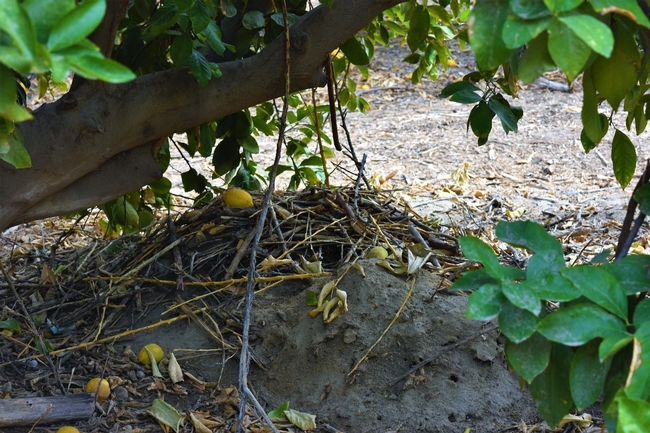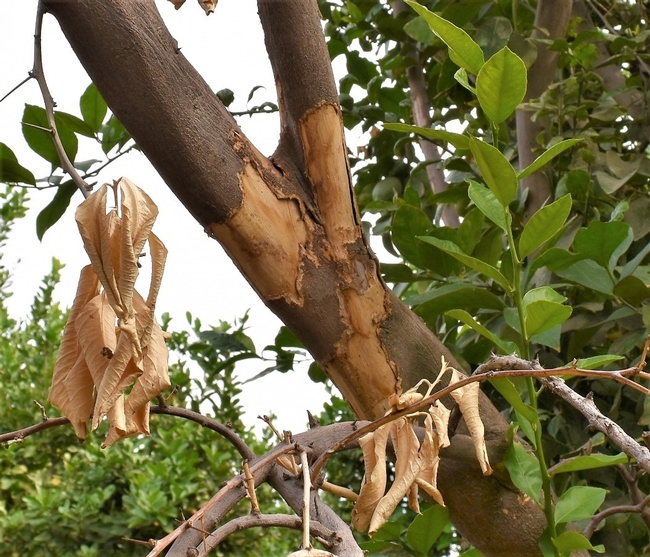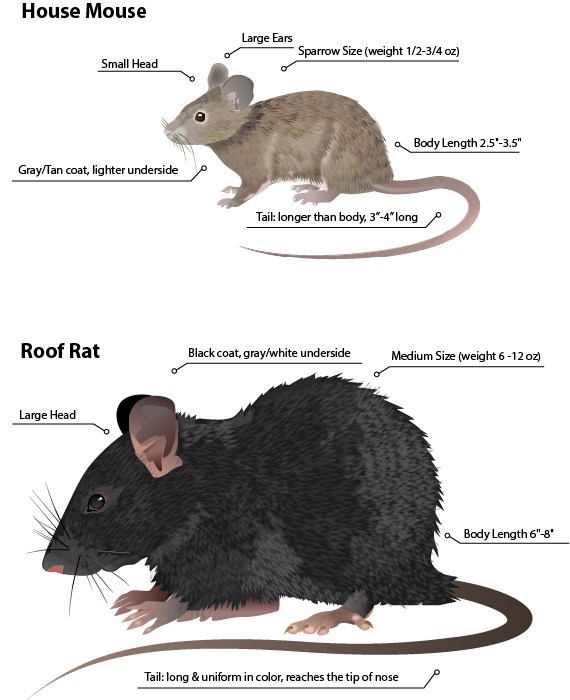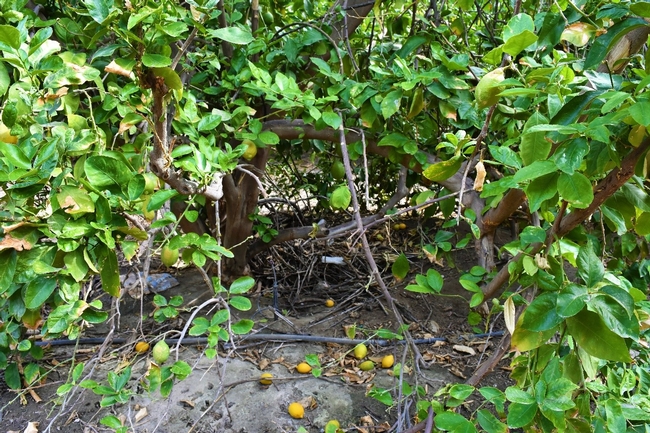The roof rat (Rattus rattus, a.k.a. citrus rat, fruit rat, black rat, or gray rat) is an introduced species of rat native to southern Asia. It was brought to America on the first ships to reach the New World and has spread around the world. This rat is the same species that carried the bubonic plague around the world and is also the reservoir host for murine typhus.
The roof rat is a common vertebrate pest in citrus and nut orchards. In citrus, it builds leaf and twig nests in trees or it can nest in debris piles, thick mulch on the ground, or in shallow burrows under the tree, especially in hot weather. In nut orchards, roof rats often nest around the base of trees. In livestock feed yards and barns, roof rats often burrow under feed bunks or into hay bales. Adult roof rats are 12-14 inches long (30-36cm) and weigh 5-10oz. (150-250g). The sleek rat has a pointed muzzle and hairless scale-covered tail that is longer than the body and head combined. They are the most active at night.
DAMAGE
Rats gnaw on electrical wires, wooden structures, and fruit and nuts on trees. They can also girdle limbs or stems, leading to mortality to part or all of a tree. Roof rats often feed on citrus, avocados, and other fruits, sometimes leaving hollow fruit skins hanging on the tree. After harvest, they damage fruit and nuts in bins by chewing them and leaving excrement. Rats are active throughout the year, and mostly at night.
MANAGEMENT
Cultural Control
Because roof rats are such good climbers and swimmers it is hard to completely exclude them from your grove or orchard.
Your fruit trees should be isolated, not touching fences, overhead wires, or the branches of other trees. Roof rats will run along fence stringer boards or support poles, phone and cable TV wires, and tree branches to reach your fruit tree. Lower branches of the tree should not touch the ground. A low-hanging skirt of drooping branches give the rats additional access routes and provides them with protective cover while feeding. Prune tree skirts so that the ground under them is open and visible. This lack of cover makes the rats uncomfortable and more susceptible to predators.
Sanitation is also important. Use or remove all fallen fruit. Reduce shelter and nesting sites of rats. Eliminate debris and woodpiles. Store materials neatly off the ground. Thin and separate non-crop vegetation around orchards where feasible and remove dead wood from fruit trees, especially citrus and avocado.
Monitoring and Treatment Decisions
Baiting *Be sure to identify the species of rat present to avoid killing nontarget or protected species.*
The use of elevated bait stations containing 0.005% diphacinone*-treated oats (sold at some county agricultural commissioner's offices) is highly effective at controlling roof rats in orchards. Secure bait in a bait station before placing in trees on limbs 6 feet or more above the ground. Placing the bait in a secure bait station will prevent bait from dropping to the ground and creating a hazard. Bait stations should also prevent nontarget animals from feeding on the bait. Bait can only be applied during the non-bearing season, so growers must take a proactive approach to managing problematic rat populations.
Trapping
Rat-sized snap or wooden box traps placed in trees are also effective, although a more time-consuming control option. Do not use glue board traps outdoors, as birds, lizards, and other nontarget wildlife may be trapped. Rats are wary, tending to avoid baits and traps for at least a few days after their initial placement. Fasten traps to limbs and bait them with sweet fruit or nut meats, but do not set the traps until after bait is readily eaten.
Be aware that certain types of rat baits for use inside buildings are not labeled for use outdoors in orchards; these are hazardous to wildlife and should not be used.


